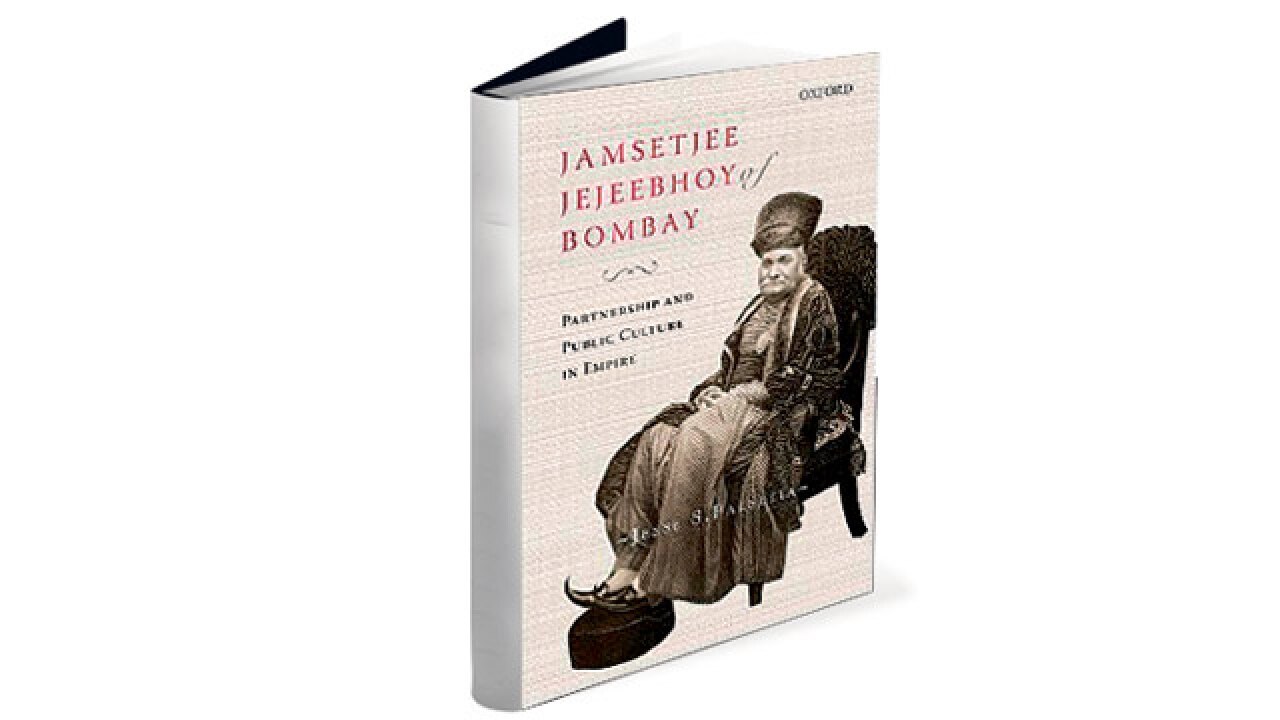
Book: Jamsetjee Jejeebhoy of Bombay: Partnership and Public Culture in Empire
Author: Jesse S. Palsetia
Publisher: Oxford University Press
Pages: 224 (hardcover)
Rs: 855
Some big corporate houses that dominate the Indian economy today had their origins during colonial times. While much is known about the present commercial and industrial activities of these entities, less is known about how they acquired their massive fortunes, especially since the colonial capitalists did not allow most natives to compete with British firms in wide swathes of trade, commerce and manufacturing for a very long time. However, wars often saw loosening of such restrictions. The British also understood the importance of creating a strong collaborative class of natives who would not just assist in their imperial mission, but also provide legitimacy and serve as examples of model subjects across colonies. This provided an opening to native entities who started out as assisting traders.
Some of them went on to start major manufacturing initiatives and saw a profit boom during imperial wars. The jute industry is a case in point. It represents a stream of re-industrialisation after the systematic de-industrialisation that the British colonialists inflicted on South Asia.
Jamsetjee Jejeebhoy of Bombay: Partnership and Public Culture in Empire by Jesse S Palsetia traces, among other things, the new money-making days of the early 19th century South Asia through the life and times of Jamsetjee Jeejeebhoy (1783-1859), the famed 'Merchant Prince of Bombay'. The book traces the early life of Jejeebhoy, placing him in the context of the Parsi community to which he belonged, and his foray into trading. His foothold in Mumbai (then Bombay) expands, as does his footprint in global trade. In fact, he becomes immensely successful, joining the league of the richest people in South Asia.
Alongside, this merchant prince and others like him transform themselves from prosperous merchants to urban notables. Much of this is bought through money. But it is the strategic use of money to climb the ladder and build linkages and partnerships with the imperial order that is of interest.
The new merchant notables displaced the traditional priestly class from community leadership and came to represent the community in front of the colonial government. Jeejeebhoy quickly rose from a community leader to the principal leader of the elite natives of Bombay province, a phase of rapid growth in his wealth and public stature. This stature was also assiduously built through his legendary charity activities, which have their stamp on present day Mumbai in the form of great public works and massive institutions like the Sir JJ Hospital, Elphinstone College, Sir JJ College of Art, as well as sectarian charities ear-marked for his own community, the Parsis.
Palsetia mentions an interesting point, which may have some relevance for the present contestation between Bombay, representing the city's much vaunted cosmopolitanism, and Mumbai, reflecting its native Marathi populace. Though Jeejeebhoy was a migrant to Mumbai, his rootedness is unquestionable. When he was setting up the JJ School of Art, he brought GW Terry from Britain as a drawing teacher on a lucrative annual salary of Rs300 in 1857. Jeejeebhoy's condition to Terry was that he must learn Marathi within a year of joining. Hence, there were other models of elite cosmopolitanism that were very compatible with the Marathi ecology of Mumbai as it is today.
Jeejeebhoy was the first subcontinental native to be awarded a hereditary baronetcy by the British crown. This was a point of high accomplishment for Jeejeebhoy, placing him head and shoulders above his native elite peers and underscoring his pre-eminence in the lopsided colonial-native relationship of the time.
One major problem is that the book conflates all natives and miniscule elite among the natives. By using terms like 'Indian requirements', 'political calculations being made by Indians', 'Indian causes' etc., it foists a false representativeness on the likes of Jeejeebhoy. By not qualifying 'Indian' with 'elite', it also paints a slightly less bloody picture of what colonialism constituted.
In fact, Jeejeebhoy and other corporate giants still in business today made their initial fortunes through drug-running and ruining the Chinese economy – in line with British imperial goals. He contributed significant sums to British war-related efforts beyond South Asia. Jeejeebhoy was no doubt an Indian, but hardly a representative native under the yoke of colonial domination.
Though repetitive in parts, the book all in all presents us with a detailed portrait of a person who in a particular period showed ingenuousness in gaining imperial favours, and also shared a significant part of his fortune for the betterment of his own sect and the wider community in Mumbai and beyond.